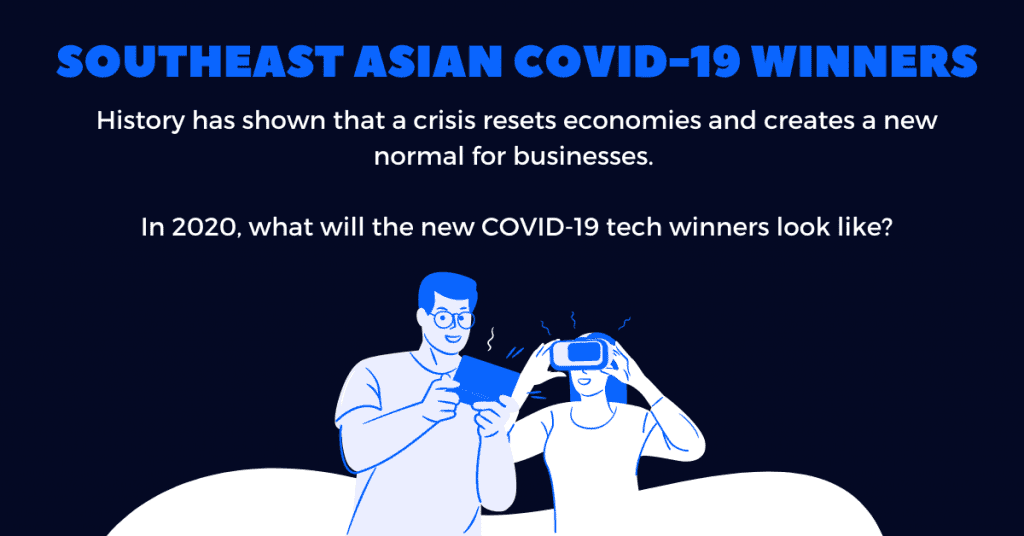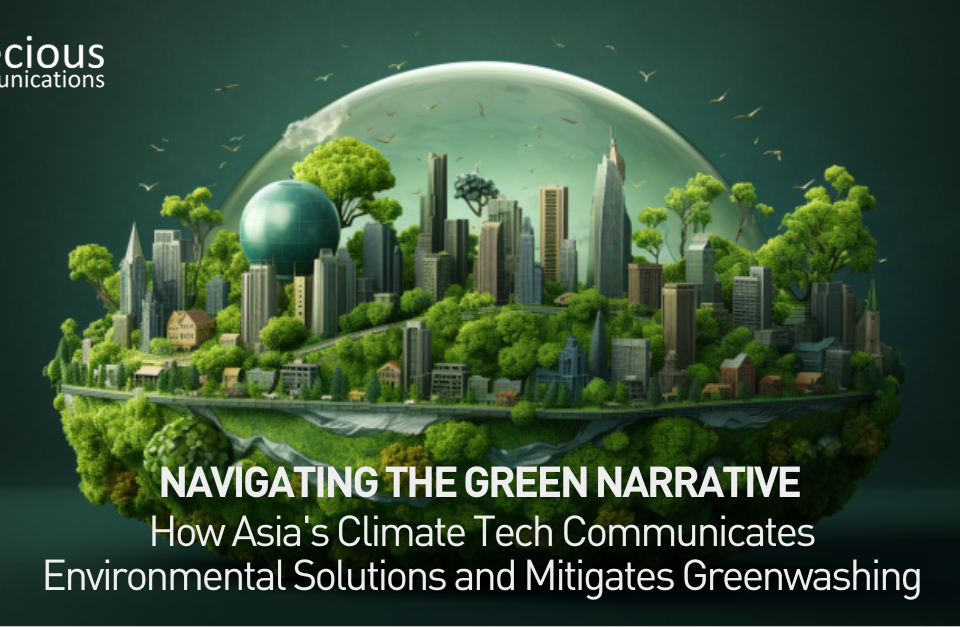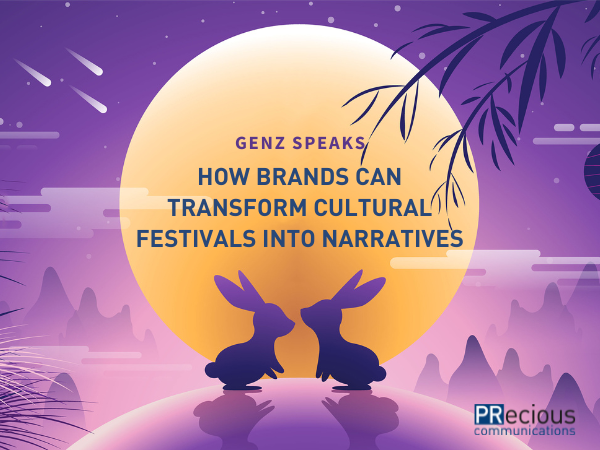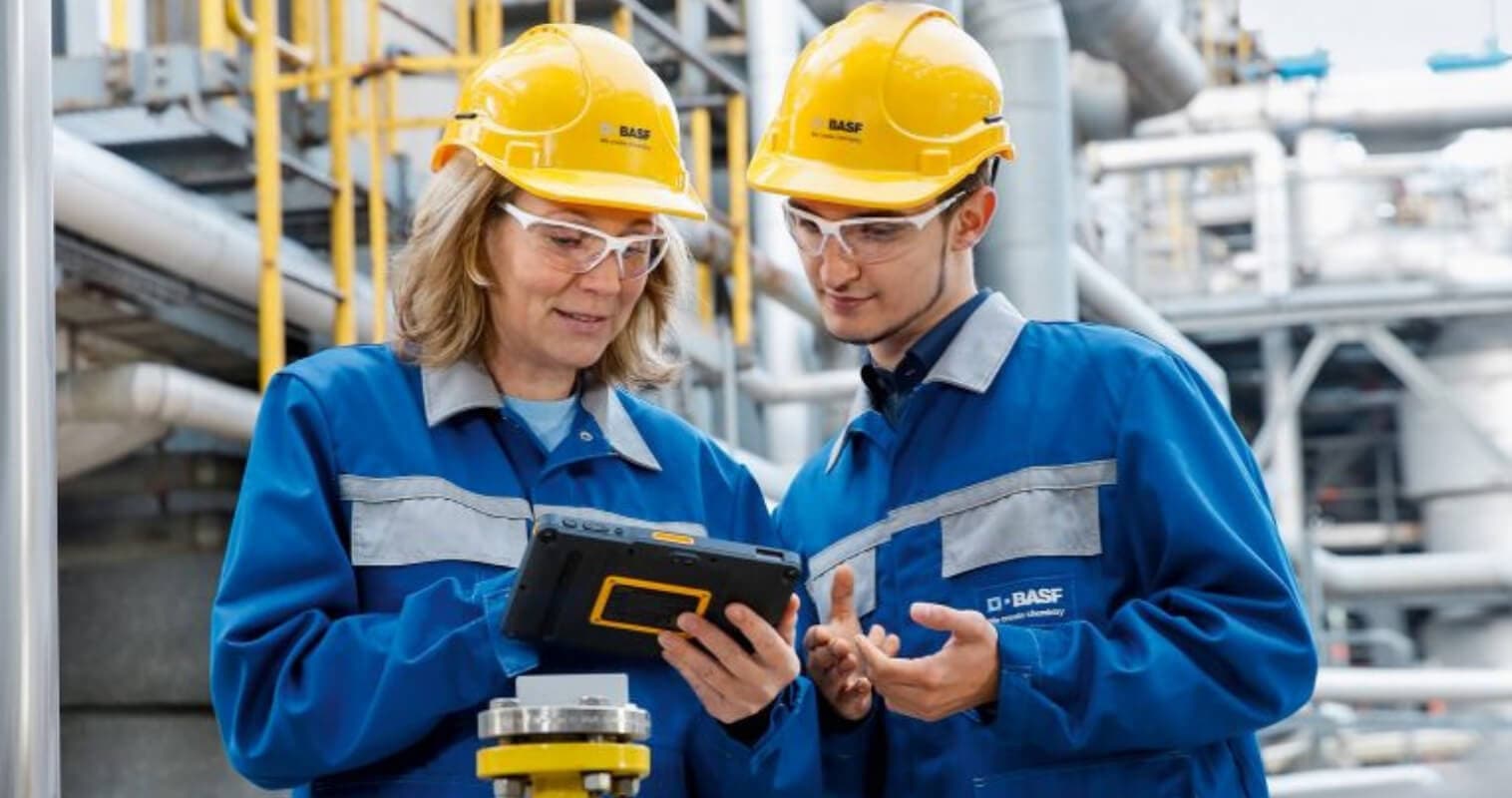Southeast Asian COVID-19 Technology Winners

PRCA SEA Interview: How PRecious Communications Managed the Impact of the Pandemic
July 3, 2020
How Software AG Empowers Enterprises in the Asia Pacific to Experience True Innovation
July 14, 2020
History has shown that a crisis resets economies and creates a new normal for businesses. In 2020, what will the new COVID-19 tech winners look like?
History has shown that a crisis resets economies and creates a new normal for businesses; those who survive, emerge more resilient, more robust, and well-prepared for the next stage of their lifecycle. We expect nothing less for COVID-19 and its impact on the tech sector.
While the stock market crash of 1987 may seem a long time ago, many of us can share a story or two on that particular crash over a few beers. Over the past 20 years, we’ve experienced our fair share of crises: the bad, the ugly, and the uglier. But what good have we seen from these crises, and how have tech companies emerged? Let’s look at a few examples.
For centuries, the “physical” was the norm. We shopped on the high street, and we even knew the name of the branch manager of our local bank or our favourite shopkeeper. 9/11 changed that. Amazon and PayPal, both established in the 1990s, redefined eCommerce and associated payments at scale, offering unprecedented efficiency and convenience. They provided an Internet solution, driven by infrastructure at such magnitude that it surpassed the reliance of only having physical infrastructure “connected” to the Internet.
Asset-light companies started to emerge out of the Global Financial Crisis in 2008. Investors began to think that utility of and access to assets was becoming more important than ownership. The “sharing economy” was born, with poster children Uber and Airbnb divorcing ownership from usage.
Around the same time, the enterprise cloud and Software as a Service (SaaS) took off. Software solutions of the past started to be repackaged and made available to users in a more affordable, accessible, and easier-to-deploy DIY model. The growth has been extraordinary – in 2008, the top five listed enterprise cloud and SaaS companies had a combined market capitalisation of US$14bn. In 2020, PayPal, Adobe, Salesforce, ServiceNow, and Shopify have a combined market cap of ~US$600bn, a near 50x increase in just over a decade. Since 2008, Enterprise cloud and SaaS have started “eating up the world”.
This time is no different. In 2020, what will the new COVID-19 tech winners look like? After speaking with investors, startups, and our sector experts, we consider six areas to look out for in Southeast Asia.

History has shown that a crisis resets economies and creates a new normal for businesses. In 2020, what will the new COVID-19 tech winners look like?
eCommerce
China has demonstrated that online commerce can supplement and indeed leapfrog traditional economics. At around 16% of total retail, China shows there is room to grow in Southeast Asia where eCommerce adoption remains low at 4%.
The COVID-19 lockdown forced the conversion of many non-adopters to eCommerce, which became a necessity. While we already saw shifts from B2C eCommerce to B2B eCommerce and robust growth from a low base in Southeast Asia, COVID-19 is most definitely accelerating the growth story.
Logistics
As a bloc, Southeast Asia is China’s largest trading partner, and intra-regional trade exceeds that of external business. Growth has already proven current physical infrastructure to be lacking, and the growth of eCommerce, 3D-printing, and IoT has changed the nature of the infrastructure required to do business.
Indonesia, where logistics represents an astronomical 25% of GDP, is ripe for digital transformation. COVID-19 has demonstrated key underinvestment across the region. Growth in the Southeast Asian logistics sector will be further elevated as the region offers an alternate manufacturing and supply chain solution to mainland China.
Payments/Fintech
Ray Dalio is right: cash is no longer king. The usage of mobile apps by the mobile-first generation of Southeast Asia has paved the way for trust in mobile wallets and electronic payments. With associated data capture, payments are facilitating financial services companies with the scale to target a traditionally underserved market. Forced adoption during COVID-19 has not only accelerated conversion and trust, but we are now seeing first-hand new lending products and services delivered faster and cheaper online than traditional institutions and an increase in the banked population.
Education
The closure of physical schools has been a massive test case for remote learning. Every parent reading this will be rolling their eyes! But it is part of the new normal, and it’s probably here to stay. During the lockdown, not only did our children have to learn online (supervised of course by patient parents!) but millions of workers started to upskill with short course online learning programs. COVID-19 is the start of the end of many jobs as we know it and online learning for our children, and indeed ourselves is here to stay.
During COVID-19, reduced or even negligible customer acquisition costs have provided an unprecedented catalyst for the EdTech sector. EdTech is opening new doors to students globally as overseas universities, once inaccessible due to price or distance, now become viable alternatives. No longer will there be only one of the Top 50 global universities based in Southeast Asia (Singapore) – but all 50.
Health
Dr Google has been a reference point for many years. However, online searches have always been supplemented by doctor visits (unless you were living in remote areas). Things have changed rapidly in recent times. Lockdown and stay at home notices have given birth to an explosion in telemedicine. Ten years ago insurers, the medical fraternity, and medical associations would have frowned upon telemedicine – but with few other options and the need for urgent and pragmatic co-operation, visionary founders are paving a path to non-conventional health offerings.
Digital Experience / Content
Zoom. What’s Zoom? Well, even my seven-year-old can tell you what that is. But look back to the 2008 Global Financial Crisis, and none of us could have answered that at all, because it didn’t exist. Zoom was founded in 2011 and during lockdown has challenged the way we interact with our colleagues, clients, and teachers. If I asked the question “is it possible to get a deal done using Zoom as the only means of communication between any of the parties?” in December 2019, a mere six months ago, I am certain 95% of the respondents would have said absolutely not, the other 5% would have had to think long and hard before answering. Having seen and done deals in entirety over Zoom in recent months, it is absolutely possible.
In the days I can only dream of right now when Singaporeans are allowed to return to the workday of old. Video meetings will continue to supplement and replace some face-to-face meetings, as corporate premises and travel are re-evaluated in light of cost, convenience and risk in the aftermath of wave one of COVID-19.
Beyond Zoom, Microsoft Teams et al., platforms which enable content to be easily created and experiences to be facilitated, will become more crucial to keeping people engaged in the remote world we are now living in.
Implications
So, what does this mean for us?
COVID-19 has created a massive upheaval to global economies, financial markets, and to our daily lives. Right now we all wish it would just be over and done with. However, if we look to the future, COVID-19 is accelerating the digitisation of the world as we know it at a pace that we couldn’t have imagined in our wildest dreams.
When at North Ridge Partners, we launched our 2019 Southeast Asia Internet Trends Report, it would have been very bold to predict that Industry 4.0 would occur within 3-5 years. But here we are. Not convinced? Let’s put this in context. Imagine the technology ecosystem touchpoints of the following and the cumulative impact across the technology sector in Southeast Asia.
A student, based in Jakarta, undertaking a course from the London School of Economics, buys a computer via Lazada (delivered in a Ninja Van) to conduct her studies financed by Empatkali using an online classroom via Zoom and paid for via Moka.
Conclusion
While COVID-19 is presenting us with many “unknown unknowns”, it’s hard to argue against the probability that tech companies will continue to accelerate the redefinition of what’s normal. Especially in Southeast Asia, with its 700m+ early-adopters!
This guest post was written by Chris Tran – Partner – North Ridge Partners. This article was originally published on North Ridge Partners.







